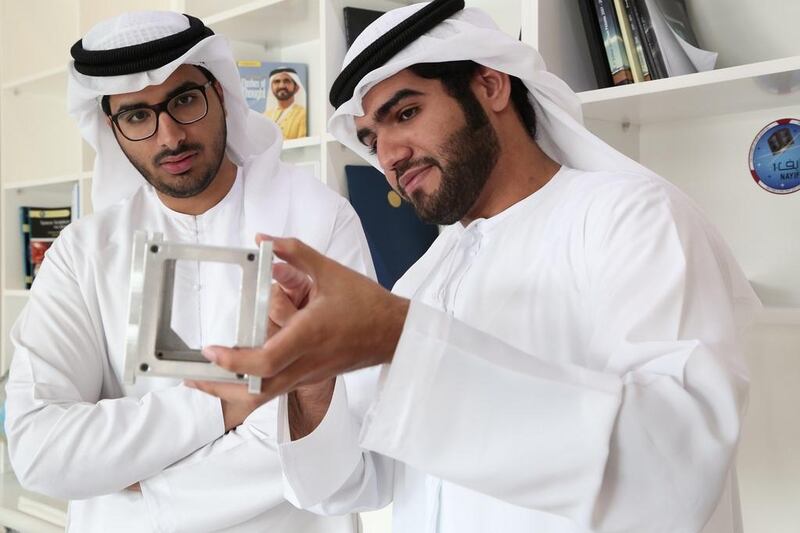A message by Sheikh Mohammed bin Rashid, Vice President and Ruler of Dubai, is being beamed across the world from space as the first to be transmitted by the UAE’s Nayif-1 satellite.
Nayif-1 was launched last week from Satish Dhawan Space Centre in India and is being tracked by a team of scientists at a control centre at American University of Sharjah.
The country’s first nanosatellite is transmitting the message in Arabic which reads: ‘The renaissance of peoples, nations and civilizations starts with education; and the future of nations starts at their schools.’
Nayif-1’s main mission objective is to send and receive messages on amateur radio frequencies.
The nanosatellite boasts a number of advanced features, most notably it is programmed to transfer messages in Arabic.
Amateur radio operators as far as Japan and Chile have received data from Nayif-1, originating from its ground station at the American University of Sharjah (AUS) and relayed via the satellite. Ham radio operators in Spain, Sweden, Haiti, the US, and even those out to sea, took to twitter to say they were receiving the satellite’s message loud and clear.
Fatma Lootah, deputy project manager of Nayif-1 at the Mohammed bin Rashid Space Centre, said the transmission was a landmark moment for the team.
“There is a large community of amateur radio operators and if Arab operators get this message in their own language I think a lot of them will be inspired,” said Ms Lootah.
At AUS, seven engineering students collaborated with the space centre in the designing, building, testing and operating of Nayif-1.
Abdulla Al Shehhi, one of the students who worked on the project for over a year, said Wednesday was a proud moment.
“It’s an incredible feeling and I hope the message communicates to others, whether they are radio operators or students, that nothing is impossible,” said the 24-year-old mechanical engineering graduate.
Along with transmitting the first messages in Arabic, the project gave engineering students first hand experience in the science, technology, engineering, and mathematics involved in sending the device into space.
Four of the seven students working on Nayif-1 have since been hired by the space centre, including Mr Al Shehhi.
“I faced many challenges during the project, because we had to do the work of professional engineers, but now am very happy to be a part of UAE history.”
Travelling at an altitude of over 600 kilometres and at speeds of 7.55 kilometres per second, the nano satellite passes over its ground station at the AUS’s campus four times a day, twice in the morning and twice in the evening.
The decision to locate the ground site on the Sharjah campus, where it is accessible to students, is intended to catch the imagination of young students.
“We wanted to excite students here and show them space isn’t that far for them,” Ms Lootah added.
Nayif one has been orbit for over a week since its launch in India last Wednesday. It was one of 104 satellites released from a single rocket.
The satellite is transmitting Sheikh Mohammed’s message on amateur radio frequencies with its telemetry and transponder data available online at AMSAT-UK, the UK’s amateur satellite community website.
tsubaihi@thenational.ae






